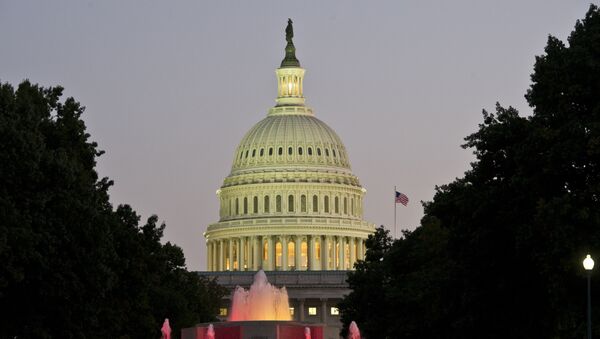What Caused the Government Shutdown and How Can It Be Ended?
A shutdown of the US government takes place either when Congress fails to pass funding for government operations before the expiration of the previous budget or when the president opposes some or all of the budget bills passed by Congress. The mechanism has existed since 1976, but the shutdown does not usually last long — only for a day or two.
A 2013 government shutdown caused by political disagreement over the Affordable Healthcare Act — also known as Obamacare — lasted for 17 days, while a 1996 shutdown during the administration of US President Bill Clinton was the result of an argument over Medicare, public health and education funding, and lasted three weeks.
Funding for Trump's border wall with Mexico has become the stumbling block in current negotiations, as the president has refused to sign a budget bill that does not include spending for his wall. Democrats have refused to provide funding for the project and talks are in a deadlock, resulting in the government shutdown.
READ MORE: Trump: Dems Can Solve Shutdown Very Quickly by Approving REAL Border Security
There are two ways to end the ongoing shutdown — the arguing sides must either agree on a whole budget or pass stopgap bills to fill in existing gaps in funding while buying time to negotiate a new budget. Congress passed such a bill on December 6, 2018, extending the time for negotiations until December 21.
What Parts of the Government Are Affected?
Despite its name, the shutdown does not stop the entire government from working. While all non-essential staff have been furloughed (around 380,000), some essential departments and agencies are continuing to work. At the same time, the remaining federal employees working (around 420,000) are left without pay until Congress and the president agree on a new budget.
At the moment, employees at the Departments of State, Transportation, Homeland Security, Commerce, the Treasury, Internal Revenue Service (IRS), and others are directly affected by the shutdown. Necessary staff at each of the departments or agencies is continuing to work without receiving pay, while the rest have been furloughed. National parks and zoos have mostly closed. Immigration courts are currently also non-operational.
READ MORE: US House Approves Bills to End Govt Shutdown, Ignores Trump Veto Threats
The Transportation Security Administration (TSA) and federal courts remain in operation although in limited capacity. Medicare and Medicaid remain unaffected by the shutdown. Special counsel Robert Mueller's investigation is also continuing its activity, despite the gap in funding.
What is the Current State of Negotiations Between Trump and Democrats?
So far, both sides of the conflict over the US budget remain adamant in their positions, with Democrats refusing to provide $5.7 billion in funding for a border wall and Trump relentlessly refusing to eliminate funding for the wall as a requirement for him to sign the budget.
According to Trump, two previous talks between the White House and Democratic leadership on the issue have "not [made] much headway." Trump has reportedly threatened that he could "keep the government closed for a very long period of time […] months or even years" in a bid to find money for the wall. The US president has also mulled using emergency presidential powers to pass funding for the wall, noting that it's "another way of doing it."
READ MORE: US Gov't Shutdown is Only Because of the 2020 Presidential Election — Trump
At the same time, Democratic House Speaker Nancy Pelosi has stated that Democrats are planning to pass a number of individual appropriation bills in the upcoming week to enable opening certain government agencies, such as the IRS and the Treasury Department, without resolving Trump's core issue for the shutdown.






